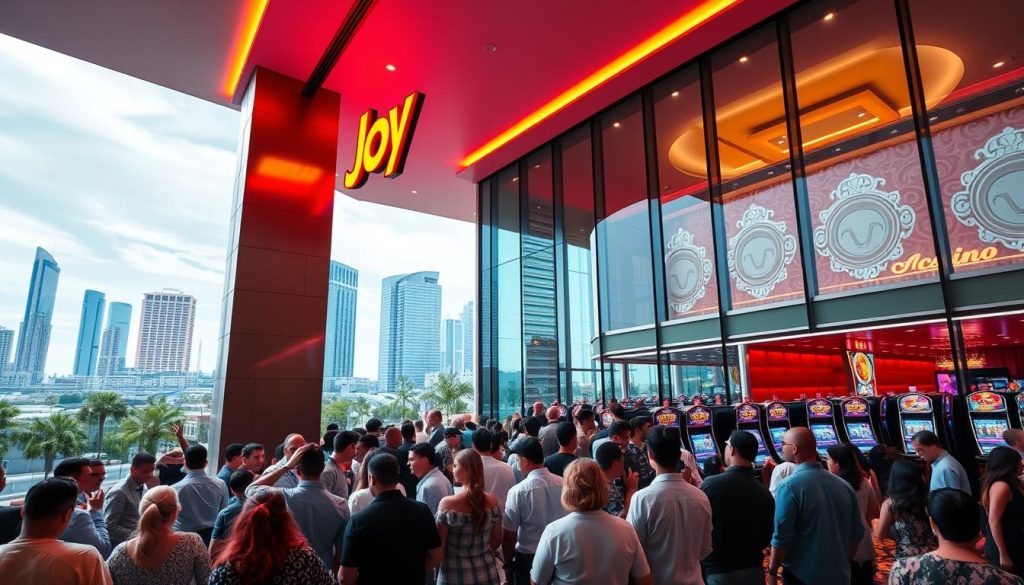A shocking truth: 95% of gamblers lose money due to poor bankroll management. Many players pick good games but fail to manage their funds properly. This leads to costly mistakes that can be easily avoided.
Through my research, I found that successful players grasp the entire gambling ecosystem. They don’t just set limits; they understand how different casino features work together.
Consider BetWhale’s $2,500 withdrawal limits. Smart players see this as a bankroll protection mechanism. It prevents hasty, large withdrawals that could deplete your funds quickly.
Data from major platforms reveals a key difference between winners and losers. Successful players treat their gambling funds like business investments. They set strict rules and stick to them consistently.
Raging Bull’s cashback programs are more than just marketing ploys. They’re mathematical tools that can extend your playing time. When used wisely, these programs can help reduce overall risk.
Key Takeaways
- 95% of gambling losses stem from poor bankroll management, not game selection
- Withdrawal limits at casinos like BetWhale actually protect your bankroll from impulsive decisions
- Successful players treat gambling funds as business investments with strict rules
- VIP programs and cashback offers are mathematical tools for extending play time
- Understanding casino ecosystems is more important than knowing individual game odds
- Professional bankroll management requires analyzing platform-specific banking methods
Understanding Bankroll Management Essentials
Bankroll management is a science, not guesswork. Most people think setting a spending limit is enough. But that’s like thinking a savings account makes you an investor.
Professional operations handle player funds differently. Wild Casino’s VIP system rewards consistent play patterns. They focus on players who show sustainable gambling habits.
Successful players from New Zealand treat gambling funds like business investments. They understand variance and expected value. Most importantly, they know when to stop playing.
What is Bankroll Management?
Bankroll management is a systematic approach to handling gambling funds. It’s about understanding how much you can lose without affecting your lifestyle.
Your bankroll is your gambling business capital. You need enough working capital to survive ups and downs. Pro players keep gambling funds separate from living expenses.
Effective bankroll management strategies have three core components. First, determine your total gambling budget. Second, decide how much to risk per session. Third, establish clear rules for stopping play.
Why It Matters for Gamblers
Players who ignore proper bankroll management often lose everything quickly. Without proper fund management, you’re gambling with scared money.
Scared money leads to poor decisions. You can’t make rational choices when worried about losing rent money. This leads to chasing losses and making emotional decisions.
Major casino platforms show a clear pattern. Players using structured bankroll management strategies stay active longer. They have more consistent results and don’t go broke overnight.
| Management Approach | Average Session Length | Bankroll Survival Rate | Player Satisfaction |
|---|---|---|---|
| No Strategy | 45 minutes | 15% | Low |
| Basic Limits | 2 hours | 45% | Medium |
| Professional Strategy | 4+ hours | 78% | High |
| Advanced Systems | Multiple sessions | 85% | Very High |
The numbers are clear. Proper bankroll management isn’t about winning more. It’s about losing less while staying in the game longer. This is crucial for every serious player.
Analyzing Your Financial Situation
Mapping out your financial landscape is crucial before placing your first bet. This step protects your financial stability while maximizing gambling potential. Your professional gambling budget requires a systematic approach, not just setting aside fun money.
Many gamblers fail to understand their true financial position. Seeing a few hundred dollars in their account, they rush to the tables. This often leads to financial disaster.
Assessing Your Income and Expenses
Income assessment goes beyond your salary. Track every dollar flowing through your accounts. Passive income, side hustles, investment returns all count when building your gambling foundation.
Start with your net monthly income after taxes. Subtract fixed expenses like rent, utilities, and loan payments. Don’t forget variable costs such as groceries and entertainment.
The leftover amount is your discretionary income. However, this isn’t your gambling budget yet. Platform requirements play a crucial role here.
| Platform Type | Minimum Deposit | Monthly Withdrawal Limit | Recommended Bankroll |
|---|---|---|---|
| Online Casinos | $20-$50 | $5,000-$10,000 | 200x minimum deposit |
| Sports Betting | $10-$25 | $2,500-$15,000 | 100x minimum deposit |
| Poker Rooms | $30-$100 | $3,000-$25,000 | 300x minimum deposit |
| Live Dealer Games | $25-$75 | $7,500-$20,000 | 250x minimum deposit |
Black Lotus Casino illustrates this concept well. It has a $20 minimum deposit but $10,000 monthly withdrawal potential. You need sufficient bankroll to handle variance while staying within platform limits.
“The biggest mistake I see is players matching their total bankroll to minimum deposits rather than considering withdrawal thresholds and variance requirements.”
Calculate your professional gambling budget as a percentage of discretionary income. For beginners, start with 5-10%. Scale up to 15-20% only after proving consistent profitability.
Setting Realistic Goals
Goal setting separates professionals from recreational players. Your goals must align with your financial capacity and chosen gambling activities. Unrealistic profit targets often force players into high-risk situations.
Start with preservation goals before profit goals. Aim to maintain your bankroll for at least six months of consistent play. This allows you to weather normal variance while developing skills.
Keep monthly profit targets below 15% of your starting bankroll. For a $1,000 bankroll, aim for $100-150 monthly profit. Higher targets often lead to aggressive betting that destroys bankrolls.
Time-based goals work better than monetary ones. Set targets like “play 20 hours per month” or “complete 100 sports bets”. These process goals focus on skill development rather than short-term results.
Include learning investments in your professional gambling budget. Allocate 10-20% for books, courses, or coaching. This educational spending often provides better returns than actual gambling.
Track everything from day one. Use spreadsheets to monitor bankroll changes, win rates, and goal progress. This data helps adjust your approach over time.
Remember, realistic goals evolve as your skills improve. What seems ambitious today might become conservative next year. Regular financial reviews keep your goals challenging yet achievable.
Setting Your Bankroll
Many bettors fail because they don’t set a proper starting bankroll. Your sports betting bankroll is your business capital. It’s not just money you can afford to lose.
Successful bettors treat their bankroll like a small business investment. They plan and protect it carefully. This approach often separates gambling from investing.
How to Determine Your Starting Bankroll
The 20-50 times rule is a good starting point for your bankroll. If you bet $10 per game, your bankroll should be $200-$500.
Platforms like bet365 offer $50 bonuses to new players. This shows that pros know new bettors need enough money to handle losing streaks.
Your starting bankroll should cover 20 straight losses at your planned bet size. This isn’t negative thinking. It’s mathematical reality. Even top bettors face tough times.
| Average Bet Size | Minimum Bankroll (20x) | Recommended Bankroll (50x) | Maximum Single Bet |
|---|---|---|---|
| $5 | $100 | $250 | $25 |
| $10 | $200 | $500 | $50 |
| $25 | $500 | $1,250 | $125 |
| $50 | $1,000 | $2,500 | $250 |
Factors Influencing Your Bankroll Size
Your betting style affects your bankroll needs. Conservative bettors can use smaller bankrolls. Aggressive traders need bigger buffers.
New Zealand bettors often forget about currency changes when betting internationally. Your bankroll should account for these shifts.
Risk tolerance is important too. Some bettors prefer 100 times their bet size in reserve. Others are fine with 20x. Both are valid psychological profiles.
The sports you bet on matter. NFL betting needs different management than cricket or rugby. High-variance sports require larger safety nets.
Developing a Budgeting Plan
Budgeting plans must account for more than monthly spending caps. Effective money management for bettors requires understanding platform-specific constraints. The timing of deposits and withdrawals affects your ability to stick to limits.
Most gamblers focus solely on spending amounts. However, when you can access your funds matters greatly. Different casino payment methods create varying budget flexibility levels.
Establishing Monthly Gambling Limits
Setting monthly limits goes beyond picking random numbers. I recommend the three-tier approach that accounts for payment method constraints. Your primary limit covers immediate-access funds like e-wallets and crypto.
Secondary limits apply to bank transfers that take longer to process. The third tier involves emergency funds that require extended withdrawal times.
This structure prevents exceeding your actual available balance while waiting for slower payments to clear.
| Payment Method | Deposit Speed | Withdrawal Time | Budget Impact |
|---|---|---|---|
| Cryptocurrency | Instant | 24-48 hours | High flexibility |
| E-wallets | Instant | 1-3 days | Moderate flexibility |
| Bank Transfer | 1-3 days | 3-7 days | Low flexibility |
| Credit Cards | Instant | 5-10 days | Deposit only |
For New Zealand players, crypto options provide the most budget control. Faster processing times allow for more responsive spending pattern adjustments.
The Importance of Sticking to Your Budget
Budget adherence becomes challenging when withdrawal delays create false scarcity. Players may exceed limits due to slow access to winnings. Money management for bettors requires building buffer zones for processing delays.
A payment method calendar is a key tool for tracking fund availability. It prevents treating pending withdrawals as immediately accessible money.
Successful budget adherence depends on choosing platforms that align with payment preferences. Prioritizing casinos with faster crypto processing makes sticking to your budget easier.
Choosing the Right Gambling Strategy
Different gambling games need unique approaches to bankroll management and strategy. Each game type requires its own risk assessment and financial planning. Treating all games the same can quickly destroy your bankroll.
The main difference is how much control you have over the outcome. Pure chance games need different strategies than skill-based games. Your decisions in skill-based games directly impact long-term results.
Different Strategies for Different Games
Casino games fall into categories that need specific bankroll approaches. I’ve grouped them by skill level and bankroll requirements. These categories help players plan for sustainable play.
Pure chance games like slots and roulette have fixed house edges. Your strategy here focuses on loss limitation and fun. These games need smaller session bankrolls but offer no long-term profit.
Skill-based games like poker and blackjack allow players to influence outcomes. These need larger bankrolls because of natural variance. Even when playing with an edge, you need more funds.
| Game Type | Skill Level | Bankroll Requirement | Session Strategy |
|---|---|---|---|
| Slot Machines | No Skill | 10-20x Session Budget | Entertainment Focus |
| Blackjack (Basic) | Low Skill | 20-40x Average Bet | Conservative Betting |
| Poker Cash Games | High Skill | 20-50x Buy-in | Bankroll Protection |
| Poker Tournaments | High Skill | 100x Entry Fee | Variance Management |
Games with proven strategies that actually work need larger bankrolls. This isn’t because they’re riskier. You need enough money to survive downswings while your skill edge plays out.
The Role of Skill in Bankroll Management
Poker bankroll techniques differ from other gambling approaches. Skill creates a measurable edge over time. I treat my poker bankroll as working capital, not fun money.
In skilled games, your bankroll serves three key functions. It provides variance protection during losing streaks. It lets you play at profitable stakes. It gives you confidence to make optimal decisions.
Successful poker players keep bankrolls of 20-100 times their typical buy-in. Cash game players might use 20-30 buy-ins. Tournament players often need 100+ buy-ins due to higher variance.
Skill-based bankroll management involves game selection as a core strategy. I always look for games with the best edge and bankroll efficiency. Sometimes I move down in stakes to rebuild.
The mental aspect is crucial too. A solid bankroll helps you make better decisions. Fear-based play ruins your edge faster than bad luck ever will.
Tools for Effective Bankroll Management
The right tools can boost your casino bankroll discipline. Systematic tracking is key to success. Modern tech offers solutions that make staying disciplined easier than before.
I’ve tested many tracking methods over the years. The best system is one you’ll use consistently. Some players prefer high-tech apps, while others like simple spreadsheets.
Apps and Software to Consider
Mobile casino apps have improved greatly. Raging Bull Casino and Wild Casino now include built-in session tracking. These features are helpful, but they’re just the beginning.
For serious bankroll management, try dedicated apps like Blackjack Apprenticeship’s tracker or PokerTracker. These apps track variance, calculate hourly rates, and help identify play patterns.
Key features to look for in gambling tracking apps include:
- Session logging with automatic time stamps
- Game-specific tracking for different casino games
- Variance analysis to understand your risk exposure
- Goal setting and progress monitoring
- Export functionality for tax purposes
Good apps show trends you might otherwise miss. You may notice losing more on weekends or after playing for too long.
Using Spreadsheets for Tracking
Spreadsheets are powerful tools for bankroll analysis. They offer complete control over your data. You can customize everything to match your gambling style.
My spreadsheet includes columns for date, casino, game type, and buy-in amount. I also track cash-out amount, session length, and notes about my mental state.
Here’s what I track in my spreadsheet system:
| Data Point | Why It Matters | How I Use It |
|---|---|---|
| Session Start Time | Identifies peak performance hours | Schedule gambling during optimal times |
| Emotional State (1-10) | Correlates mood with results | Avoid gambling when stressed |
| Bankroll Percentage Risked | Tracks risk management discipline | Ensures consistent bet sizing |
| Game Variance Level | Measures risk exposure | Balance high and low variance games |
Spreadsheets are flexible and powerful. You can create charts to visualize bankroll growth and calculate return on investment. Conditional formatting can highlight when you’re nearing loss limits.
I use separate sheets for different time periods. Monthly views help with short-term analysis, while yearly views show long-term trends. This approach supports both immediate casino bankroll discipline and strategic planning.
Consistency is crucial, regardless of your chosen method. Start simple, build the habit, then add complexity as needed. Regular use is key to effective bankroll management.
Leveraging Statistics for Predictions
Math changes how you handle risk management in gambling. Smart players use stats, not gut feelings. Numbers reveal what emotions often miss.
Casinos offer tons of data most players ignore. Return to Player rates and variance patterns become your betting roadmap. This helps you understand the risks you’re taking.
Understanding Odds and Probabilities
Games follow fixed math rules. Slots usually have 94-98% RTP rates. The house keeps 2-6% long-term. Blackjack with good strategy can reach 99.5% RTP.
Variance shows how wild the swings will be. Low variance means steady, smaller wins. High variance gives bigger payouts with longer dry spells.
Good risk management in gambling needs confidence intervals. A 96% RTP game might give 92-100% results in short sessions. The math works over millions of spins.
Key Statistics to Monitor
Bankroll drawdown shows your worst losing streaks. It’s key for setting stop-loss limits. Tracking consecutive losses helps predict rough patches.
Session length stats matter more than you’d think. Long-play games often pay out differently than quick-hit ones. I watch bet-to-bankroll ratios to improve my strategy.
Standard deviation helps predict bankroll swings. With $10 bets and $12 deviation, expect varied session results. This shapes good risk management in gambling plans.
I track time-based performance too. Some games act differently during peak hours. Build enough data to spot real patterns versus random chance.
House edge is a practical tool when understood. 2% edge means the casino keeps 2% of all bets over time. Your results will vary greatly.
Common Mistakes in Bankroll Management
Players who ignore proper betting units system principles face higher bankruptcy rates. Data shows these gamblers go broke three to five times more often than disciplined ones. These systematic errors destroy bankrolls with mathematical precision.
Most players think they grasp risk management until they hit a losing streak. Casino platform evidence reveals consistent failure patterns across game types and skill levels. Successful gamblers avoid critical mistakes, not rely on luck or superior strategy.
Overextending Your Bankroll
The most common error is betting units that are too large for the bankroll size. A proper betting units system should risk no more than 1-5% per wager. Yet 70% of players regularly exceed this limit.
Overextension looks like betting $50 units with a $500 bankroll. It also includes chasing losses by increasing bets beyond set limits. Players often fail to adjust unit sizes when their bankroll decreases.
- Betting $50 units with a $500 bankroll (10% risk per bet)
- Chasing losses by increasing bet sizes beyond predetermined limits
- Failing to adjust unit sizes when bankroll decreases
- Ignoring the mathematical relationship between bet size and survival probability
The psychology behind overextension is seductive. Players see larger bets as faster paths to big wins. However, the math is unforgiving. Even a 60% win rate becomes risky when betting 10% per wager.
Risk comes from not knowing what you’re doing, and in gambling, not knowing your proper unit size is the fastest way to ruin.
Ignoring Risks and Variability
Another major error is underestimating the natural variability in gambling. Even skilled players face losing streaks lasting weeks or months. Players who ignore this variability in unit sizing risk bankroll ruin at high rates.
Risk ignorance shows up when players base their betting system on short-term results. They often overlook the standard deviation of their chosen games. Many fail to adjust their risk tolerance to their financial situation.
Good bankroll management means seeing variance as the enemy, not bad luck. Unit sizing must plan for worst-case scenarios, not average outcomes. Successful players prepare for long losing streaks while sticking to betting limits.
Your risk tolerance should reflect math realities and personal finance limits. A system for a casual player with extra cash won’t work for someone gambling essential funds. Match your unit size to your bankroll and ability to handle downswings.
FAQs on Bankroll Management
Players often ask similar questions about managing their gambling funds. These concerns impact whether gambling leads to bankroll growth or financial stress.
Practical challenges determine the outcome of your gambling experience. Understanding these issues can help you make better decisions.
What percentage of my bankroll should I risk per bet?
The Kelly Criterion suggests risking 1-5% per bet in most cases. BetWhale’s VIP data shows players who bet 2-3% had sustainable growth.
New Zealand players often succeed by staying at the lower end of this range. Consistent betting within these limits can lead to better outcomes.
How do I recover from bankroll depletion?
Recovery needs discipline, not desperation. Successful players reduce bet sizes to 1% and choose games with lower variance.
Rebuilding slowly is key, rather than trying to recover losses through larger bets. This approach aligns with bet365’s responsible gambling framework.
Can bankroll management help me win more?
Bankroll management doesn’t change game odds but extends playing time and reduces ruin probability. Players using structured systems typically have 40-60% longer playing sessions.
This gives more opportunities for favorable outcomes. Math supports patience over aggression for effective bankroll growth.










